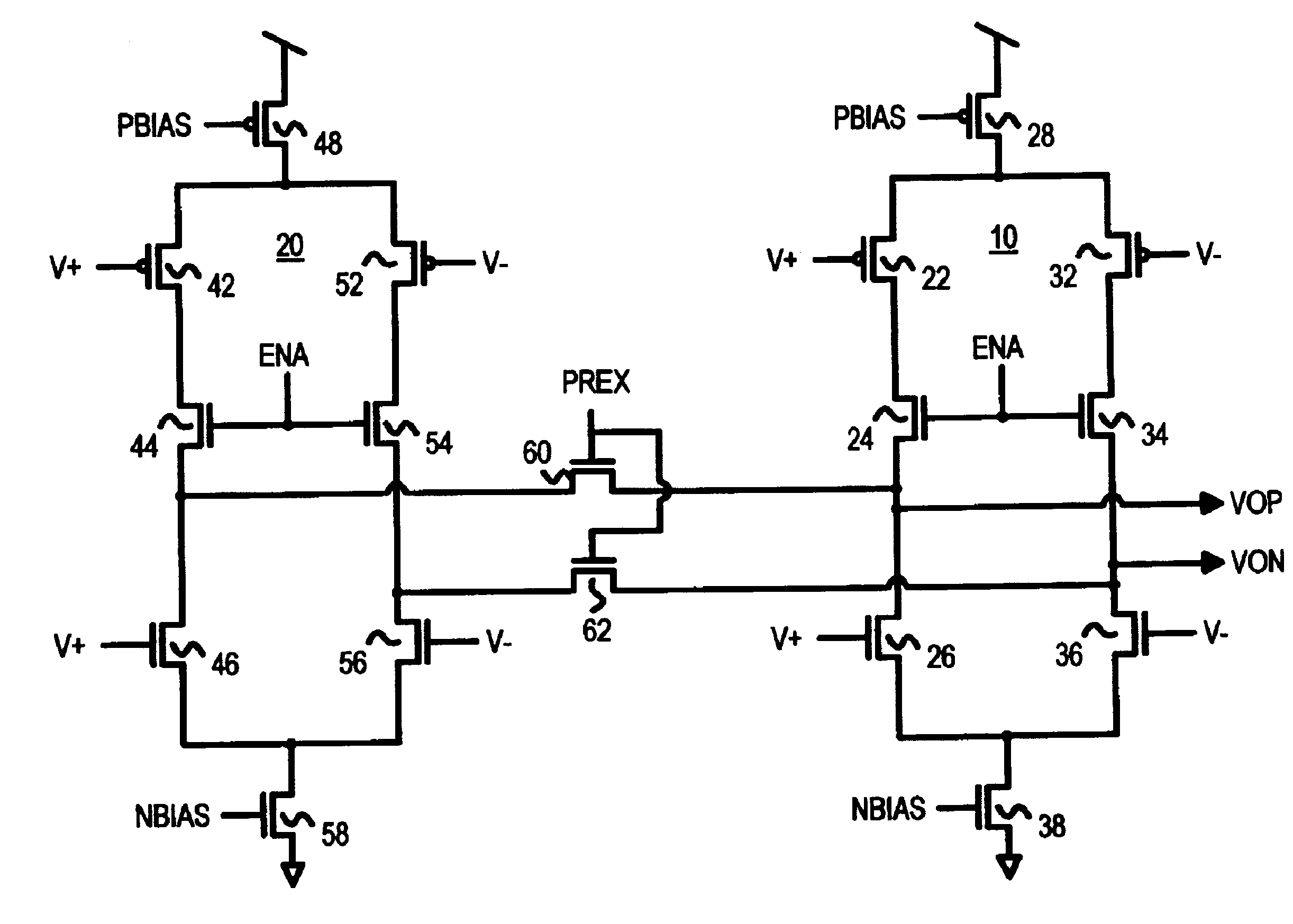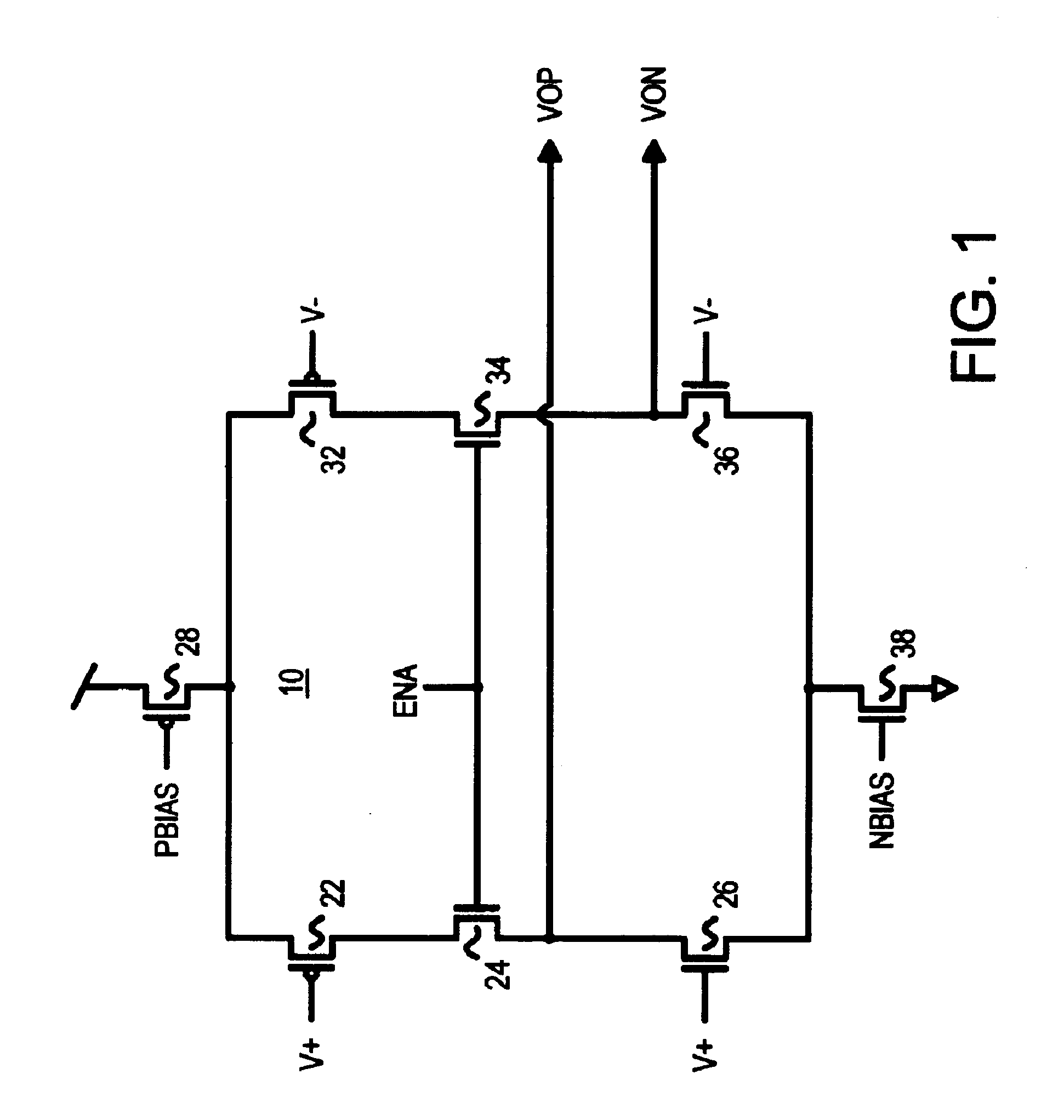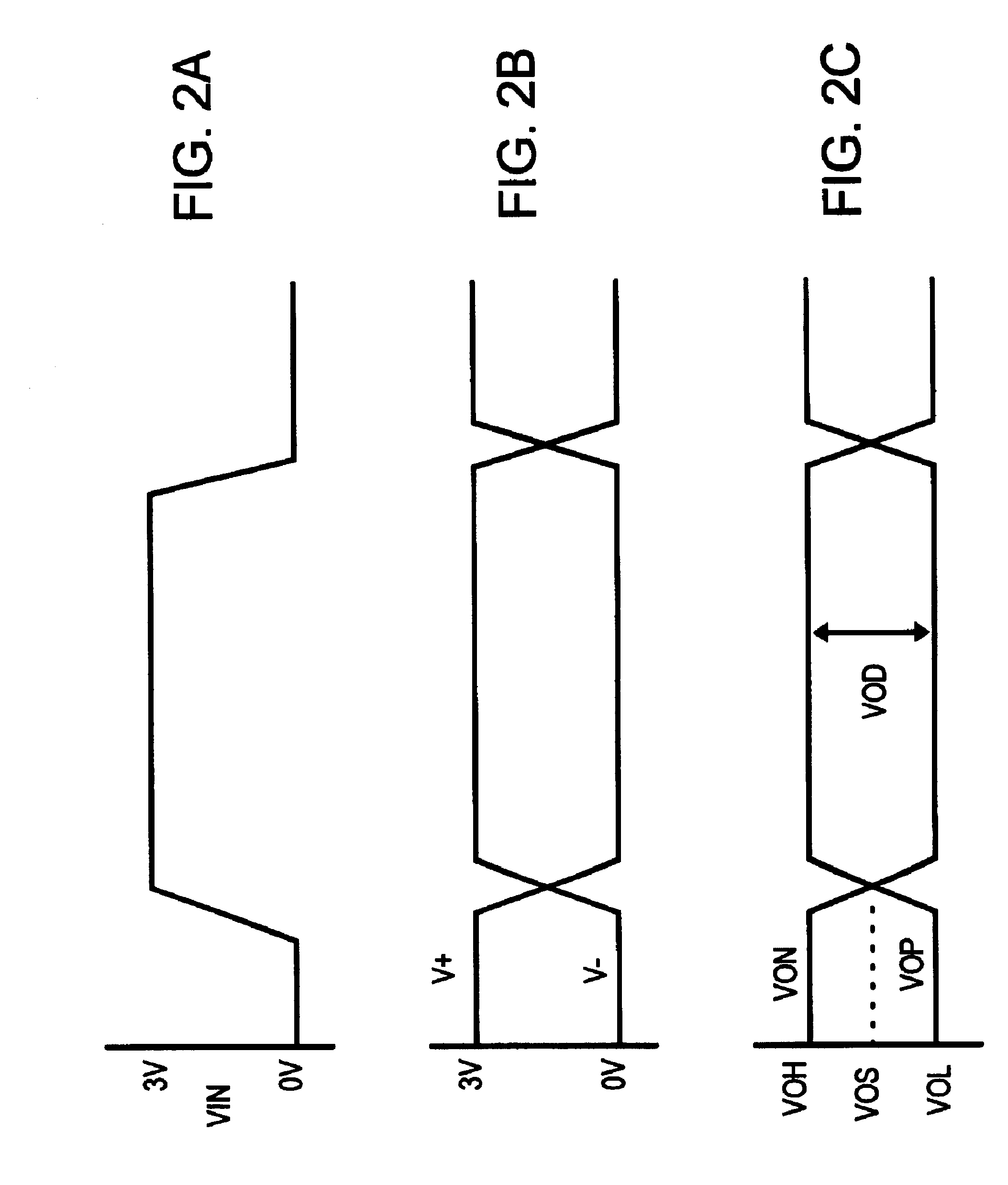Low-voltage differential-signalling output buffer with pre-emphasis
a low-voltage differential and output buffer technology, applied in pulse manipulation, pulse technique, baseband system details, etc., can solve the problems of long time-consuming and laborious driving of low-impedance transmission lines, distortion, and large external loads that cannot be quickly driven with such wide voltage swings without creating emi and distortions
- Summary
- Abstract
- Description
- Claims
- Application Information
AI Technical Summary
Problems solved by technology
Method used
Image
Examples
Embodiment Construction
Several other embodiments are contemplated by the inventor. For example, full transmission gates can be substituted for the n-channel link transistors. Different transistor sizes and biases can be used to obtain desired currents in the two stages. The load resistance may be chosen by the system designer from a range of values. Additional devices such as capacitors can be added, and various parasitic resistances and capacitances may exist but are not shown. The pulse generator can be constructed in many variations, such as using NAND gates and signal inversion rather than NOR gates as shown. Positive logic gates may be used, such as an OR gate constructed from a NOR gate and an inverter as is commonly available from standard-cell libraries. More complex multi-input gates can also be employed.
Additional boost or primary stages may be included. Separate timing signals may be used to provide a gradual increase or decrease in switching currents. The voltage differences (VOD) shown are ac...
PUM
 Login to View More
Login to View More Abstract
Description
Claims
Application Information
 Login to View More
Login to View More - R&D
- Intellectual Property
- Life Sciences
- Materials
- Tech Scout
- Unparalleled Data Quality
- Higher Quality Content
- 60% Fewer Hallucinations
Browse by: Latest US Patents, China's latest patents, Technical Efficacy Thesaurus, Application Domain, Technology Topic, Popular Technical Reports.
© 2025 PatSnap. All rights reserved.Legal|Privacy policy|Modern Slavery Act Transparency Statement|Sitemap|About US| Contact US: help@patsnap.com



